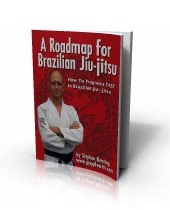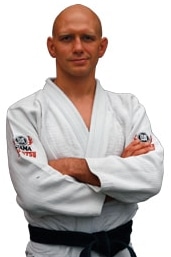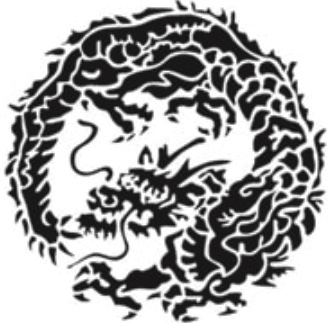
Performance under pressure is always tricky. In fact a lot of martial arts practitioners worry about whether they’d actually be able to execute their skills in super-stressful situations.
Of course competing at a tournament or performing at belt tests can be stressful. But the scariest high pressure situation of all is a self defence scenario where you and/or your family is being threatened.
If push were to come to shove and you actually had to defend yourself could you actually use your skills? Or are you worried that your mind might turn to mush in the heat of the moment…
This happens all the time. Here, with permission, is a story a female friend told me,
“It was dark outside in downtown Seattle and I was walking to the bus. A man started following me and making comments . All I could think about was “Don’t look at him. Don’t touch him. Don’t talk to him. Keep walking.” All my focus went into hoping he might get bored or distracted, or that I would reach the group of people ahead of me. I used to wear headphones when I walked in the hopes that people would leave me be. It didn’t work.
Then he threatened to shoot me. I had no idea if he had a gun or not, but at the time I had no self defense training, so all I could think to do was pull out my phone and call 911. He could have been pointing a gun right at me and at the time I probably would have done the same thing. When the lady asked where I was, for the life of me I couldn’t tell her any more than that I was facing the water. Even though I was right by a sign that said 4th & Pike.”
Ultimately my friend did many of the right things. That’s proved by the fact that she’s still here, alive, breathing and healthy.
On the other hand, at the critical moment in this super-scary situation, my friend’s mind essentially went blank. She had help on the line but couldn’t even verbalise where she was (and this was in a part of town that she was familiar with).
It’s not surprising that stress made someone’s ability to verbalise an accurate location so problematic.
 Part of the problem comes from the fact that we’re all cavemen at heart.
Part of the problem comes from the fact that we’re all cavemen at heart.
We might live in big cities, drive cars, and have digital arguments with virtual friends. But the bodies and minds we are born with are essentially identical to that of our ancestors who were painting the caves of Lascaux, France, 20,000 years ago.
Our neurology and physiology is primed help us with stressful gross motor activities like chasing wooly mammoths, fleeing from sabretooth tigers, and maybe dragging cavegirls by the hair.
Fight or flight is always lurking just below the surface. When things get stressful enough our hormonal system dumps a giant amount of adrenaline into our bloodstream and – BOOM – suddenly we’re ready for action.
That adrenaline serves a purpose: it makes you much stronger, much more pain resistant, able to keep on going despite injury. If you ever have to lift a car off a small child with your bare hands then you don’t want to be calm. You want to be mad, scared, enraged – whatever it takes to get into that adrenaline-soaked state of high arousal.
But there’s a cost to developing superhuman strength, and that’s the loss of fine motor control and significant amounts of higher brain function.
Adrenaline usually doesn’t make us smarter. In fact it’s not unusual to get all kinds of weird psychological symptoms in the middle of a fight or flight reflex. Basically, take whatever IQ you started with and cut it in half.
20,000 years ago in the Paleolithic, if a caveman called Thrag was in danger of getting trampled by an angry mastodon, then Thrag didn’t need to call 911, or stay calm and talk about the mastodon’s feelings. He just needed to run faster, jump further, and climb higher. He needed gross motor solutions to gross motor problems.
Thrag the caveman also probably also spent more time in truly dangerous situations than we do today in our pampered, cosseted, cubicled lives. So – ironically – he had more experience dealing with, and staying intelligent during, those adrenalized moments.
Today we rarely need to deal with stampeding mastodons. And when when things start getting stressful at work it’s generally frowned upon to use your adrenaline-induced super-strength to start flipping desks upside-down and throw computers out the window. 99% of the stressful situations in our lives require thinking, communicating, and fine-motor solutions. The difficulties come when you’re trying to work fine motor skills in a gross motor situation without having first inoculated yourself to that stress.
But it IS possible to partially inoculate yourself to stress and become more at home with it. If you train then you often put yourself into stressful situations on purpose. You practice thinking, planning, and moving while under pressure all the time.
Of course a training session at the club isn’t going to be as stressful as a real self defense situation where your very survival is at stake. But time on the mat is still gradually building up your familiarity with, and comfort in, the stress zone.
Lt. Col. Dave Grossman has written about how only 15 to 20% of soldiers in World War 2 actually fired their weapons at the enemy in battle. Grossman attributes this largely to an innate resistance to killing other humans. That’s probably correct, but I’m also sure that many soldiers were simply so scared and freaked out by combat that their minds simply shut down.
During the 20th century training of new soldiers evolved considerably. Endless hours of marching on the parade ground were replaced by much more realistic training, stress inoculation, and mental acclimatising to the realities of combat. By the Korean War the percentage of soldiers who shot at the enemy was much higher (55%), and by the Vietnam war they were higher still (95%).
These are important considerations for our current conversation. It illustrates that it IS possible to overcome the all-too-human tendency to freeze. All that’s required is proper training.
My friend – the one who survived the attempted mugging in Seattle – is now training in Krav Maga, Filipino Kali, and a little bit of grappling. So she’s doing all the right things to inoculate herself to stress and give herself options if she’s ever in a bad situation again.
Whatever kind of training you do, it can’t just consist of techniques…
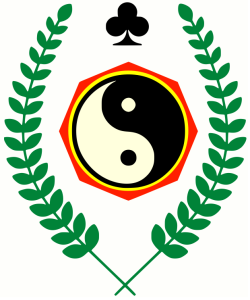 My first black belt was in a hybrid martial art called Kajukenbo, specifically in the ‘Emperado Method’ subsystem. Training in this full-contact art involved beating the shit out of ourselves and our training partners.
My first black belt was in a hybrid martial art called Kajukenbo, specifically in the ‘Emperado Method’ subsystem. Training in this full-contact art involved beating the shit out of ourselves and our training partners.
The idea was to go so hard in the dojo that there was nothing an attacker on the street could do to us that we hadn’t already done to ourselves in the dojo – a great example of training as a form of stress-innoculation.
At the top of the Kajukenbo crest there’s a three-leaf clover which symbolises the trinity of mind, body and spirit.
To survive and thrive in high pressure situations you need to have each of these three areas checked off.
Let’s go just a little deeper into the mind-body-spirit trinity…
Mind
In a stressful situation you need to keep thinking. Keep the mental gears turning. Is there a way out of this without fighting? Should I initiate the action or wait and see what the other guy does? Does he have weapons or friends nearby? What technique should I use? The list of considerations for using your skills in self defence goes on and on.
Your mind going completely blank in a potential confrontation would be a problem. You’d make unintelligent decisions, but also much of that hard-won technical knowledge you’ve accumulated in hours and hours of training might go out the window as well.
Your mental state is strongly tied to your ability to do the following:
- Technique – Which technique are you going to use, and what details do you need to focus on to make them work effectively?
- Timing – When are you going to use your techniques? Too early or too late and they won’t be effective…
- Strategy – The bigger picture; what are you ultimately trying to accomplish with your techniques?
Keep thinking, keep thinking, keep thinking.
“To live through an impossible situation, you don’t need to have the reflexes of a Grand Prix driver, the muscles of a Hercules, the mind of an Einstein. You simply need to know what to do.” – Anthony Greenback, The Book of Survival
Body
Even after 20 years of MMA having mainstream visibility there are still some ‘woo woo’ martial artists out there who think it’s all about technique. Or maybe ‘channeling their Chi’ in just the right way. The good news is that most BJJ and MMA practitioners don’t harbour too many illusions about this. The brutal reality of sparring against resistance quickly forces grapplers to recognise that physical attributes are important.
Techniques in the head without a body to execute them are like a Grand Prix driver in a car without wheels, engine or transmission. You won’t be able to use your knowledge if your body isn’t up to the challenge to translate those techniques into reality.
To beat an opponent you want to match your strength(s) against his weakness(es). And the more physical advantages you can stack the deck with the better…
We’ve previously talked about various physical attributes and their relationship to jiu-jitsu. Here’s a list of some of the most important physical attributes to for grappling and the martial arts:
- Endurance
- Strength
- Speed
- Explosiveness
- Flexibility
- Balance
- Agility
- Sensitivity
- Etc.
Improving your physical attributes – making yourself stronger, faster, more agile etc. – will help you with every aspect of the martial arts. It may even save your life someday. And even if you never, ever get into a streetfight we can’t overlook the fact that health and self defence are inextricably linked (more about that connection in this blog post here).
Of all the attributes I believe that endurance is the most important. It is the platform on which everything else is built. Nobody says it better than one of my martial heroes, Dan Inosanto, “If you’re tired you’re not strong, if you are tired you’re not fast, if you’re tired you don’t have good technique, and if you’re tired you’re not even smart.”
Do something physical. Your jiu-jitsu will thank you for it.
I hated every minute of training, but I said, ‘Don’t quit. Suffer now and live the rest of your life as a champion.’ – Muhammad Ali
Spirit
The ‘Spirit’ part of the trinity refers to the intangibles like tenaciousness, drive, willpower, pain tolerance, desire to win, and the willingness to make sacrifices.
Dan Inosanto was the first person to tell me that a technical, stronger, faster fighter can still be beaten if he runs into someone with a stronger will to fight. This was true when I heard it 30 years ago, and it’s still true today.
There are many reasons you can lose the will to fight, and if you keep on training you’ll eventually encounter and overcome them all. Just by persevering – by not quitting – you ARE getting mentally and physically tougher. If you keep on training for long enough you’ll suffer your shares of bang-ups, boo-boos and scratches. You’ll learn to differentiate between between discomfort, pain, minor flesh wounds and major injury (they are NOT the same thing).
An indomitable will to fight, a resolute refusal to never, ever give up, is the single biggest factor for learning BJJ, doing well in self defense situations, and success in the game of life itself.
Keep training – I’m sure that you’ll rise to the occasion!
‘Train hard, fight easy.‘ – Military saying.
Building Up Your Mind, Body and Spirit
Yes, some people are just born fast. Others are naturally strong. Others are really tough. But no matter what your starting point is, every aspect of your mind, body and spirit can be improved with training.
Here’s a controversial idea… If you want to improve your self defence skills then regardless of your martial art you should compete in a few tournaments. .
It’s NOT that you’re going to pull guard or try a flying triangle choke in the street. And no, you’re not going to try and win by an advantage in the street.
You DON’T need to devote your life to competition. The goal is NOT for you to become a world champion. In fact it DOESN’T really matter if you win or lose.
The reason is to go outside your comfort zone, challenge yourself and have a (relatively) safe, consequence-free way of testing yourself in an adrenaline dump situation. Competition can be nerve-wracking, and a lot of people don’t want to compete because it’s stressful when hundreds of people are watching you. But that’s exactly the point.
Purposely freak yourself out, try to deal with it, and start learning how to keep your nerves under control as best as you can.
It’s when we do difficult things that we grow as a human beings.
The art of BJJ teaches you to handle stress, pressure and physical confrontation. And that’s mostly because of sparring. You’re really trying to submit someone who is really trying to submit you. You could do traditional kung fu for 20 years and never deal with as much resistance and pressure as you encounter in a single week of BJJ training.
At first just visiting a martial arts school to watch a class is intimidating. The next scary thing is actually going to your first class to start training. After that maybe sparring the biggest guy in class can be intimidating. After that maybe you need a competition to keep yourself challenged and to focus your training.
My point is that it’s a progression of challenges. You don’t jump directly from walking through the door to fighting for the UFC championship belt. Taking small successes and leveraging them into bigger successes is one of the main lessons of sports psychology .
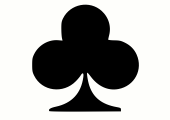 We don’t train because it’s easy. We train because it’s hard and because it will make us better, stronger people.
We don’t train because it’s easy. We train because it’s hard and because it will make us better, stronger people.
Congratulations on taking the harder path.
‘Most people have the will to win, few have the will to prepare to win.’ – Bobby Knight
